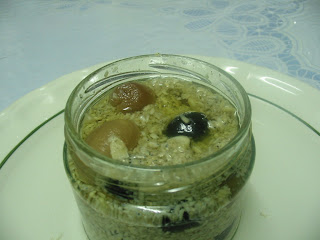How do you do Adobo?
Adobo is probably the most versatile Filipino dish. You can practically do anything and add anything as long as you stick with the basic braising formula of vinegar, salting agent, garlic, and pepper. Philippines has a wide variety of vinegar -- top three common source are sugar cane, palm, and coconut. Salting agent can be the basic sea salt, fish sauce, or soy sauce. Some regions like in the Western Visayas, would put anato as a coloring agent since they don't use soy sauce but salt. Anato seeds make the Wetern Visayan Adobo red. The Tagalogs don't mind having a colorless adobo--they call it adobo sa puti (white adobo). Onse can also try putting turmeric and you'll have a yellow adobo.
Laurel or bay leaf is also a usual ingridient, but one can still find a tasty adobo without it. Put a clove of star anise or five spice powder and you'll get a Chinese-style adobo.Those from Guimaras would add mangoes to add sweetness in adobo. When you're in the Bicol region, finding your adobo cooked in coconut milk (and sometimes from semi-burnt coconuts!) should not be surprising.
The meat ingridient can be anything from pork, beef, chicken, and fish--or their combinations. The Kapangpangans add Chicken liver. Vegans can have their own version of adobo using soya protein such as tofu (in the Philippines two popular varieties: the tohu and tokwa) or other vegetable protein. Langka, Puso ng Saging (Banana Heart), Labong (Bamboo shoots), and radish are also vegetables that would provide a meat like ingridients. If you know some Chinoys, they'll tell you that they have tasted adobo with fried fish, salted dried fish, dried pusit, dried shrimp (hebi), peanuts, mushrooms can all be a nice ingridient for Adobo. Ah, and don't forget the chorizo macao (Chinese dried sausage)!
There is also variety in cooking style: slow cooked in a crackpot (they say adobo cooked in the tradition Pinoy clay pot is the best), marinated and braised in stainless pot, deep fried then braised (as in the style of Fr. Vic Baltazar of Ateneo de Davao), braised then deep fried (like the style of Y2K talabahan in Iloilo), roasted then braised (adobong litson!), braised then shredded and deep fried.
Adobo can be as limitless as one's imagination. What's your own take of this famous Pinoy dish?
(Photo: Basic Adobo marinated overnite in garlic, pepper, soy sauce and vinegar and braised until tender)


Comments